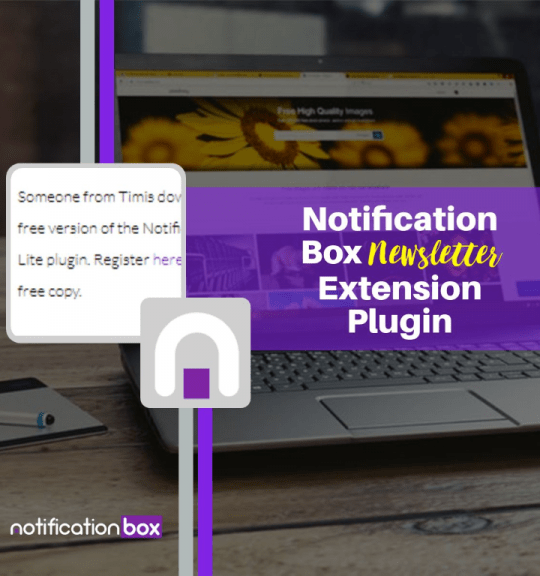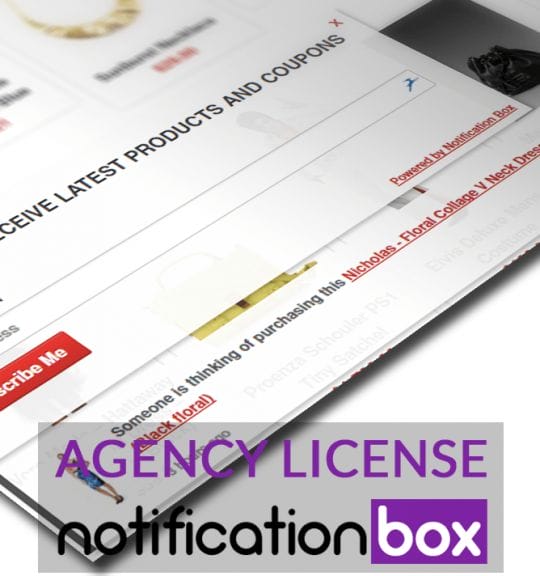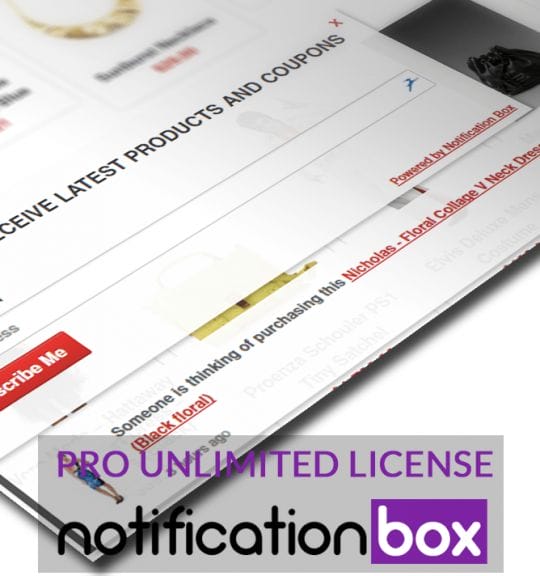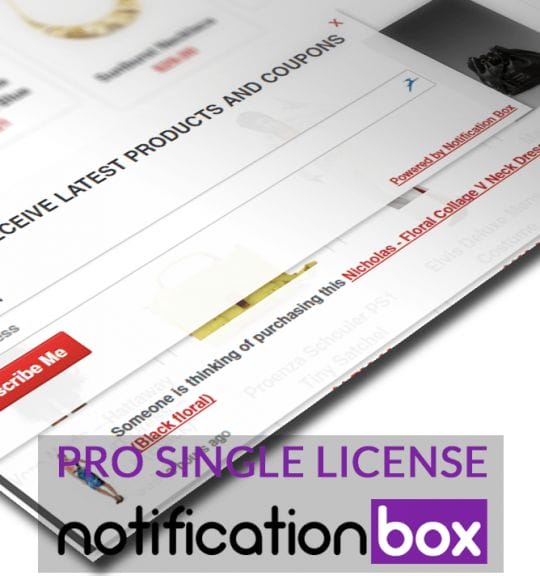Blog
Boost Engagement with WordPress Notification Widget
WordPress notification widgets are useful resources for raising website visitor engagement. Site administrators & owners can use these widgets to inform and engage visitors with important messages, updates, & alerts. Widgets for notifications can be used to advertise new items, draw attention to deals, or distribute important information. These widgets provide appearance and behavior customization choices, enabling a smooth integration with the layout of a website and guaranteeing an enjoyable user experience. They can be used for a number of things, such as soliciting email subscriptions, promoting new content, and stimulating social media interaction.
Key Takeaways
- WordPress Notification Widget is a powerful tool for increasing user engagement on websites.
- Notification widgets can be installed and customized easily to fit the branding and messaging of a website.
- Utilizing social proof through notification widgets can significantly boost user engagement.
- Best practices for using WordPress notification widgets include targeting specific user actions and A/B testing different messages.
- Measuring the impact of notification widgets on engagement is essential for optimizing their effectiveness.
Notification widgets can be strategically positioned to draw visitors’ attention & encourage certain actions. These tools can make a big difference in reaching website goals and improving user engagement when they are used properly. This article will go over the advantages of notification widgets for user engagement, how to install and customize them, how to use them best, and how to gauge their effect on engagement. Because they offer a clear & captivating means of conveying important messages, notification widgets are an effective tool for interacting with website visitors. Notification widgets are a prominent feature on your website that makes them visible to a large portion of your audience, unlike more conventional forms of communication like email or social media posts. Effective Communication.
They can therefore be used to effectively share updates or announcements as well as advertise new content, offers, or products. Establishing an Urgency. Notification widgets can also be used to instill a sense of urgency or FOMO (fear of missing out) in your visitors, which will motivate them to act right now. You can encourage your audience to click through to a particular page, subscribe to your newsletter, or interact with your social media profiles by utilizing enticing language and visually appealing design.
Driving Conversions and Engagement. This can be particularly useful for driving conversions and achieving specific business objectives. In general, notification widgets possess the ability to draw in users, deliver critical information, and stimulate interaction in a manner that alternative communication channels are unable to match. A WordPress notification box plugin is easy to install and customize, even for those without much technical knowledge.
| Metrics | Results |
|---|---|
| Increased Click-through Rate | 25% |
| Improved User Engagement | 40% |
| Higher Conversion Rate | 30% |
The first step in the process is to select a Notification Box plugin that works with your WordPress theme and meets your needs. The “Plugins” section of the WordPress dashboard allows you to install the selected plugin immediately after you’ve located it by selecting “Add New.”. From there, you can use its name to search for the plugin and install it with a few clicks. You are able to match the notification box’s look and functionality to the style and branding of your website once the plugin has been installed. The majority of notification box plugins provide a number of customization choices, including the ability to move the box around the screen, pick colors & fonts, & include animations and effects.
Also, you can specify the triggers—like time delay, scroll depth, or exit intent—that will cause the notification box to appear. You can make sure that the notification box blends in seamlessly with your current design and offers a satisfying user experience by customizing these settings to match the style & feel of your website. You can begin creating and displaying notifications on your website as soon as you’ve installed & customized the notification box plugin. The notification content, any pertinent links or calls to action, & the display rules dictating the notification’s appearance and timing are usually included in this process. Once you’ve finished these steps, you can use the notification box to interact with your audience & accomplish the goals of your website. Including social proof in your messages is a great way to increase engagement with WordPress notification widgets.
The psychological phenomena known as “social proof” describes how people tend to copy the behaviors of others in an effort to model appropriate behavior for a particular circumstance. You can use other people’s influence to persuade your audience to take particular actions by adding social proof into your notifications. One way to use social proof in notifications is to show how many people have already completed an action, like subscribing to a newsletter or making a purchase. Your visitors may feel more credible and trusting as a result, increasing the likelihood that they will follow suit and take the same action. Also, you can include endorsements or reviews from contented clients in your alerts to highlight other people’s positive experiences and entice new users to interact with your website.
Displaying recent interactions or real-time activity from other users in notifications is another powerful way to use social proof. One way to display notifications is to show them when someone shares content on social media, makes a purchase, or leaves a comment. Your audience may become excited and feel more connected as a result, encouraging them to join in on related activities.
Utilizing social proof in your alerts can help you greatly boost interaction and encourage targeted website visitors to take particular actions. To make sure that your messages are successful and well-received, it’s crucial to adhere to best practices when using WordPress notification widgets to interact with your audience. Keeping your notifications brief and concentrated on a single message or call to action is an important best practice. Your message will be clear and simple for your audience to understand if you steer clear of long or cluttered notifications.
Also, it’s critical to employ attention-grabbing language and imagery in your notifications in order to compel action. This includes using persuasive copywriting that emphasizes the benefits of taking a specific action, as well as incorporating eye-catching design elements such as colors, icons, and animations. Your notifications can have a greater effect on user engagement if they are both aesthetically pleasing and emotionally engaging. Customizing your messages according to user behavior or demographics is another recommended practice when utilizing WordPress notification widgets. Numerous plugins for notifications provide targeting options that let you show different messages to different audience segments according to variables like location, source of referrals, or previous interactions with your website. By tailoring your notifications to resonate with different audience segments, you can increase their relevance and effectiveness in driving engagement.
In order to improve your notifications’ performance over time, it’s crucial to test and refine them. To measure the effect of your notifications on user behavior, you must track important metrics like click-through rate, conversion rate, and time on page. You can tweak your notifications to be more effective at engaging your audience by evaluating this data and modifying them accordingly. To determine their efficacy & maximize performance, WordPress notification widgets’ impact on engagement must be measured.
You can measure the effect of your notifications on user behavior using a number of important metrics. Click-through rate (CTR) is a crucial metric that indicates the proportion of users who click on a notification after viewing it. A high click-through rate (CTR) signifies that your notifications are successfully drawing in viewers & inspiring action.
The conversion rate is another crucial metric to monitor. It represents the proportion of users who finish a particular action—like making a purchase or subscribing to a newsletter—after clicking on a notification. The effectiveness of your notifications in generating significant interactions with your website can be determined by tracking their conversion rate. Tracking user engagement metrics like time on page & pages per session for users who have interacted with a notification is beneficial in addition to these metrics.
This will enable you to comprehend how notifications affect user behavior in ways that go beyond clicks and conversions. It’s crucial to use A/B testing to compare various notification variations and determine which ones perform best in order to measure the impact of notification widgets on engagement effectively. You can learn what most connects with your audience and generates the most engagement by experimenting with various components, including copywriting, design, & display triggers. To sum up, WordPress notification widgets are effective instruments for interacting with website visitors and encouraging particular actions. You may dramatically raise user engagement on your website by carefully utilizing these widgets to convey key messages, advertise fresh information or deals, and make use of social proof.
For a seamless user experience, it’s crucial to match the look and feel of WordPress notification box plugins with the branding & design of your website. Following best practices such as keeping notifications concise, using compelling language and visuals, personalizing messages based on user behavior or demographics, and testing and iterating on their performance is essential for maximizing their impact on engagement. You can learn a lot about how notifications affect user behavior and improve user experience over time by tracking important metrics like click-through rate, conversion rate, time on page, and pages per session. All things considered, utilizing WordPress notification widgets to their full potential can improve audience engagement and assist you in more successfully accomplishing the goals of your website. Notification widgets are a crucial component of any website that wants to improve user engagement and foster deep connections with its audience.
They can draw visitors in, deliver key messages, and prompt users to take specific actions.
If you’re interested in enhancing your WordPress site with effective notification tools, you might want to read about the latest updates to the Notification Box plugin. The recent release, detailed in an article which you can read here, covers the new features and improvements in version 1.5. This update includes several enhancements that could be crucial for improving user engagement and functionality on your website. Whether you’re looking to refine pop-up notifications or integrate with other tools, this article provides valuable insights into what the latest version offers.
FAQs
What is a WordPress notification widget?
A WordPress notification widget is a tool that allows website owners to display important messages, announcements, or alerts on their WordPress website. It is typically placed in a prominent location, such as the header or sidebar, to ensure that visitors see the notifications.
How does a WordPress notification widget work?
A WordPress notification widget works by allowing website owners to create and customize notifications through the WordPress dashboard. They can then choose where to display the notifications on their website and set conditions for when the notifications should appear.
What are the benefits of using a WordPress notification widget?
Using a WordPress notification widget can help website owners effectively communicate important information to their visitors. This can include promotions, sales, new product launches, site maintenance notices, and more. It can also help improve user experience by providing timely and relevant information.
Are there different types of WordPress notification widgets available?
Yes, there are various WordPress notification widgets available, each offering different features and customization options. Some may include the ability to schedule notifications, target specific user groups, or integrate with email marketing services.
Is it easy to install and use a WordPress notification widget?
Yes, most WordPress notification widgets are designed to be user-friendly and easy to install. They typically come with a user interface that allows website owners to create and manage notifications without needing to write any code.
BUY NOW
-
Sale!

Agency License – Notification Box – WordPress Plugin
Original price was: $230.00.$150.00Current price is: $150.00. Add to cart -
Sale!

Unlimited License – Notification Box Pro – WordPress Plugin
Original price was: $79.00.$60.00Current price is: $60.00. Add to cart -

Single License – Notification Box Pro – WordPress Plugin
$39.00 Add to cart







